Montrealers are heading to the polls on November 2 to elect a new mayor. While the citizens have the democratic privilege of voting, the Dead certainly do not. As such, Haunted Montreal will be representing them and making demands to the mayoral candidates on their behalf. Generally-speaking, the Dead want two things: to be remembered and to be respected.
Welcome to the seventy-fifth installment of the Haunted Montreal Blog!
With over 500 documented ghost stories, Montreal is easily the most haunted city in Canada, if not all of North America. Haunted Montreal dedicates itself to researching these paranormal tales, and the Haunted Montreal Blog unveils a newly researched Montreal ghost story on the 13th of every month!
This service is free and you can sign up to our mailing list (top, right-hand corner for desktops and at the bottom for mobile devices) if you wish to receive it every month on the 13th!
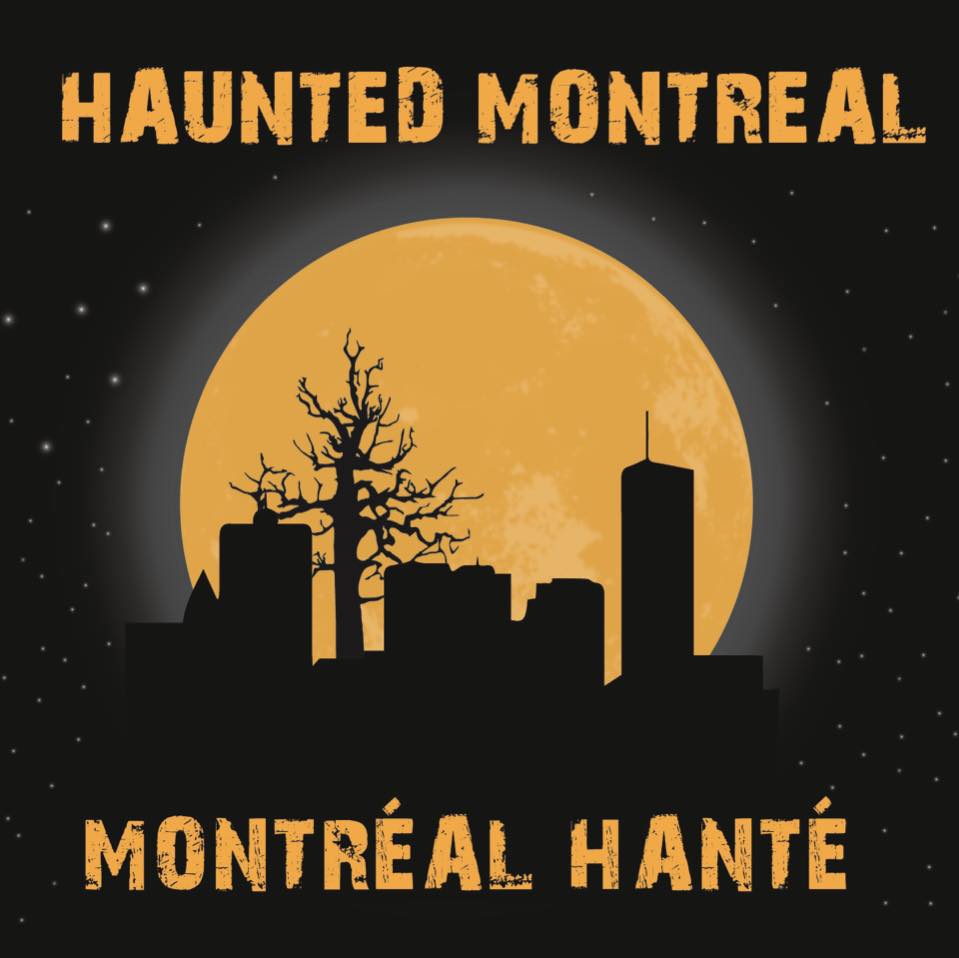
With the Halloween Season behind us, Haunted Montreal is moving into winter mode by restarting our Haunted Pub Crawl!
Offered every Sunday at 3 pm in English and the last Sunday of the month at 4 pm in French, the Haunted Pub Crawl is a great way to enjoy some spirits with a spirit! More details are below in our Company News section!

We are also offering our other ghost walks and paranormal investigation as private tours, weather permitting:
Haunted Griffintown Ghost Walk
Paranormal Investigation in the Old Sainte Antoine Cemetery
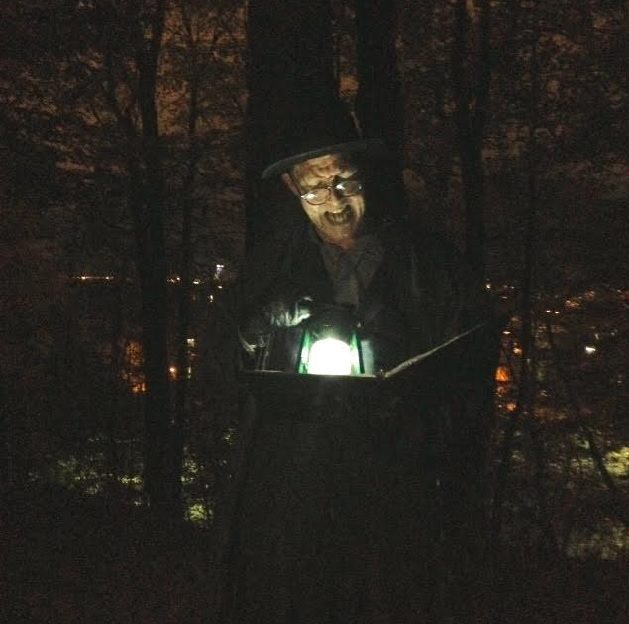
Our Virtual Ghost Tour is also available on demand!
Want to give the gift of a haunted experience this holiday season? You can now order a Haunted Montreal Gift Certificate through our website. They are redeemable via Eventbrite for any of our in-person or virtual experiences. There’s no expiration date.
Lastly, we now have an online store for those interested in Haunted Montreal merchandise. More details are below in our Company News section!
This month we examine Clock Tower Quay, a tourist destination in Montreal’s Old Port where visitors sometimes discover creepy and paranormal wet footprints that defy evaporation on even the hottest and sunniest of days.
Haunted Research
Clock Tower Quay is a popular tourist destination in the Old Port of Montreal, especially following the installation of an urban beach in 2012. Overlooking the deadly St. Mary’s Current, it is an ideal place to spend a sunny afternoon safe on the shore. However, several people have spotted wet footprints on the quay – even on the hottest days when water evaporates very quickly. As the sun beats down on the pavement, the wet footprints remain, unevaporated, baffling the tourists who visit. Could these paranormal prints be related to a maritime disaster from the city’s distant past?
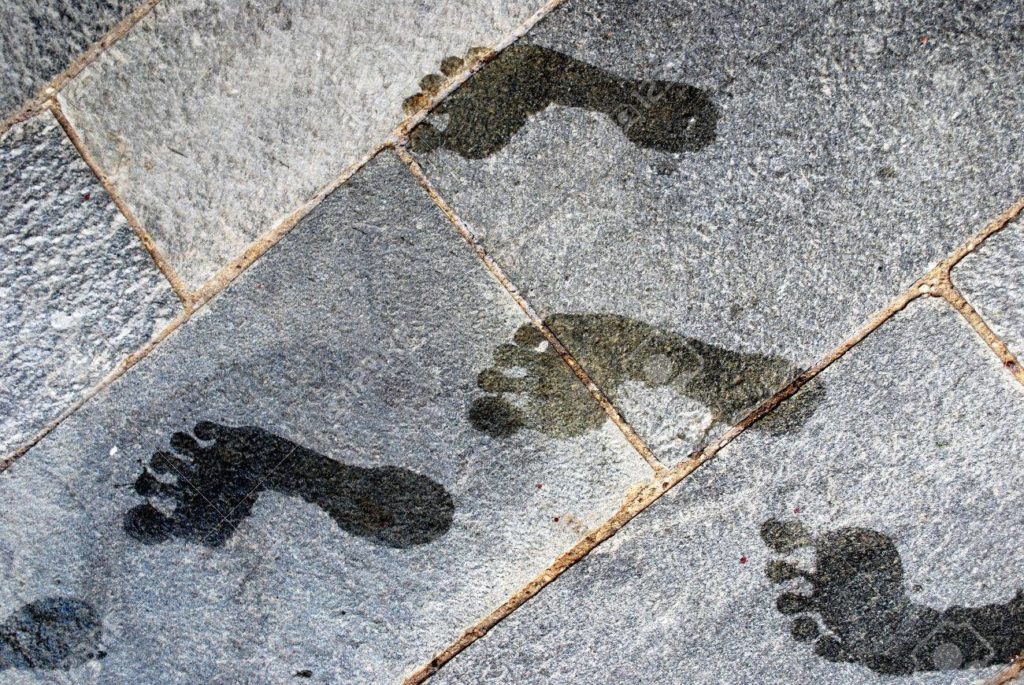
The island of Montreal/ Tiohtià:ke has hosted maritime and port facilities since the ancestors of today’s Kanien’kehá ka (Mohawk) people settled it over 8000 years ago. With the island being surrounded by rapids, it was necessary to establish docking areas to unload canoes in order to portage goods around the dangerous waters.
When the French colonized the island in 1642, their port facilities were very rudimentary. Wooden docks were laid out along the shoreline but could not provide harbour for larger ships. Instead, smaller rowboats were lowered to bring people and goods to the shore.
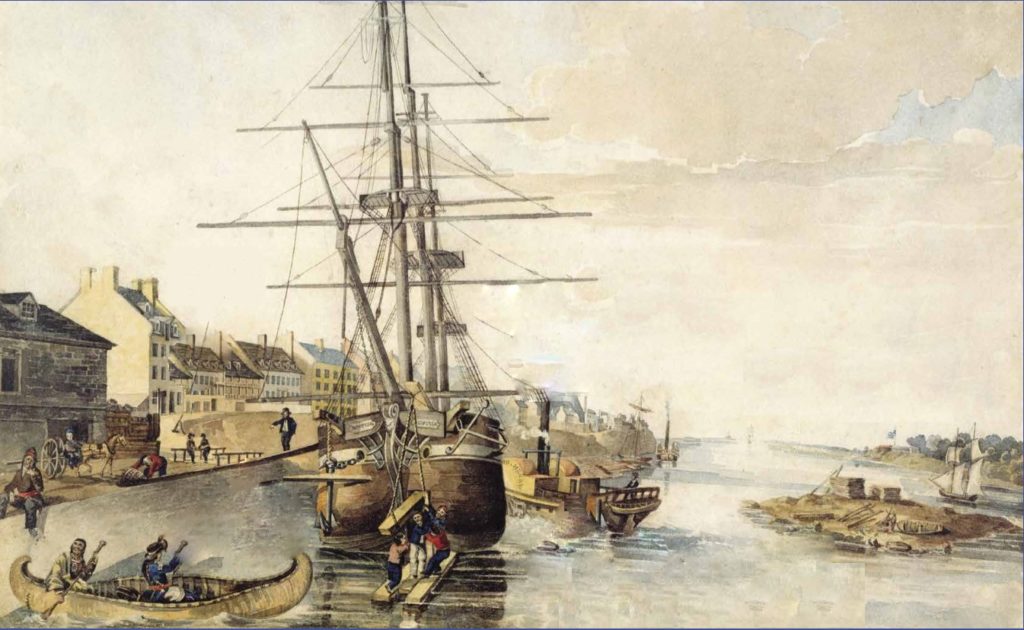
When city capitulated to the British in 1760, plans were made for a major port expansion. In 1830, the Montreal Harbour Commission embarked upon a 20-year plan to develop a world-class port where large ships could dock on various quays that extended into the water.
Passenger service of paddle-wheel steamboats began operating between Montreal and Quebec City, with the Victoria Pier in Montreal employed to load and off load passengers.
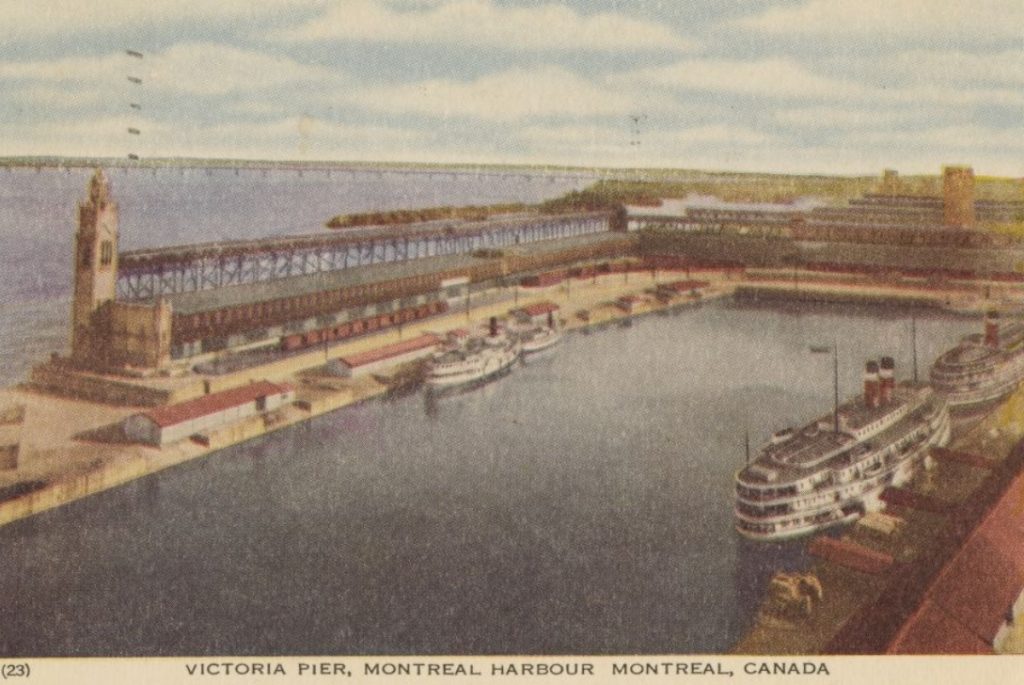
Following World War I, Montréal-based engineer Paul Leclaire designed the Clock Tower. It was built between 1919 and 1922. At a striking forty-five metres high, it marks the entrance to the port and also serves as a memorial to sailors lost at sea in wartime. Upon its completion, the wharf was renamed “Clock Tower Quay”.
Always a popular site with tourists, who can climb to the top up a set of stairs to an observation deck with great views of the river, the site was enhanced in 2012 with the addition of an urban beach. While swimming is not allowed due to the deadly currents, guests can enjoy a sandy beach while relaxing under blue parasols.

One American tourist named Billy Yzereef visited Clock Tower Beach in July of 2021 and was impressed:
“This is a great place to spend the afternoon sun-tanning while watching the boats on the river! The only weird thing was a series of wet footprints on the quay that I noticed while approaching the beach. It was a very hot day and I knew that swimming was not allowed, so I wondered where they came from.”
Yzereef continued:
“What was even stranger was that the same footprints were still there after I had spent the afternoon lounging on the beach. I tried soaking one up with my towel, but it just reappeared seconds later.”
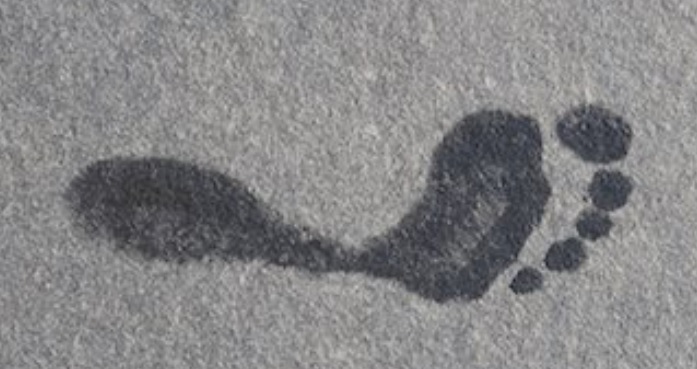
Yzereef is only one of many visitors over the years who have spotted the wet footprints on Clock Tower Quay, leading to speculation that something paranormal is going on.
Upon hearing about the mystery, a Montreal-based psychic decided to visit the quay to see if she could determine the origin of the haunting.

After much interrogation of the site and intense meditation, a date sprang into her mind: Saturday, June 27, 1857.
According to the Montreal Gazette on that date:
“The scene on the Montreal waterfront that Saturday morning was horrifying. Twelve little children lay huddled in death on the deck of the steamer Napoleon. Beside them were the bodies of a young man, a teenage girl and two women “worn with the toil of the world, mothers perchance.”
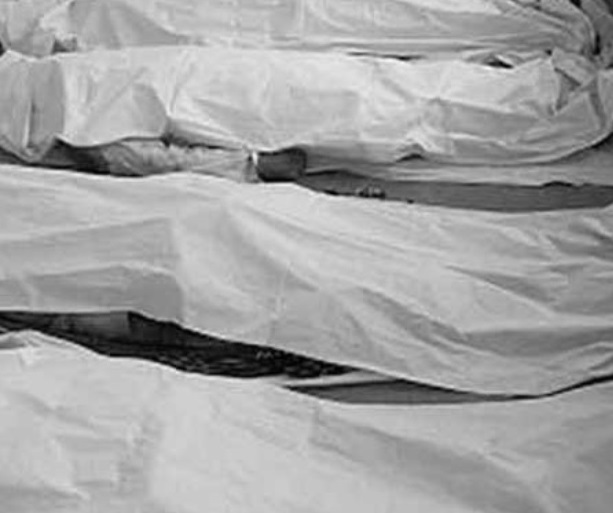
The day before, the worst maritime disaster in the country’s history had occurred. Over 250 people, mostly Scottish immigrants, had died upstream from Quebec City at Cap Rouge.
Their voyage had begun on May 18th when they boarded the John McKenzie in Greenock, Scotland. Bound for Quebec City and beyond, over 330 skilled immigrants were onboard, including mechanics, farmers, weavers and other professionals. With families in tow, these immigrants were hoping to make a new life on the other side of the Atlantic Ocean.
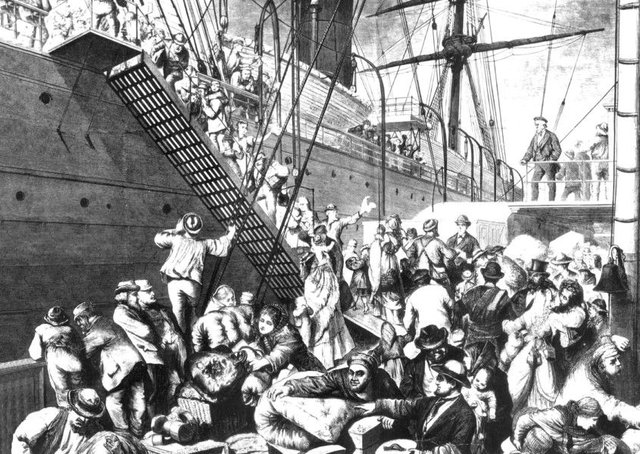
After a tedious journey, the John McKenzie arrived in Quebec City on June 25th. The passengers disembarked and found lodgings for the night.
The following day, approximately 250 of the Scottish immigrants boarded the paddle-wheel steamer Montreal at 4 pm with the upriver destination of Montreal City. Others stayed in Quebec City or took the train to Montreal.
The Montreal departed on schedule with Captain J.C. Rudolph at the helm and 300 passengers. About an hour later, Rudolph spotted the steamer Napoleon ahead of him at Cap Rouge. Even though the Montreal was an older vessel with a history of engine fires, Rudolph ordered to crew to add more fuel to the boilers in an effort to overtake the Napoleon. These types of race were not uncommon for bragging rights and to save time and money for the company.
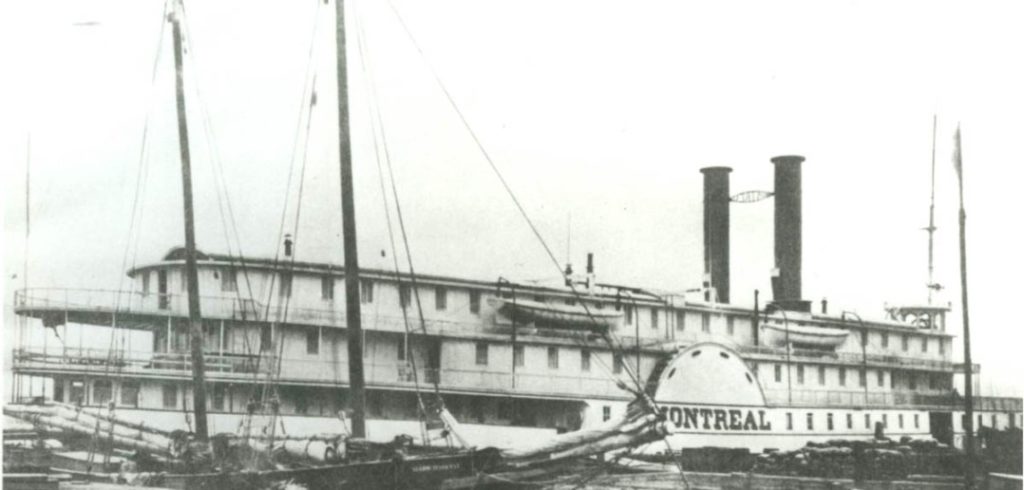
The Montreal’s engine room became dangerously overheated and two small fires broke out. A crewman doused them with a bucket of water but within seconds a third flame erupted, this one much deadlier than the first two.
Indeed, within minutes, the whole ship was engulfed in flames.
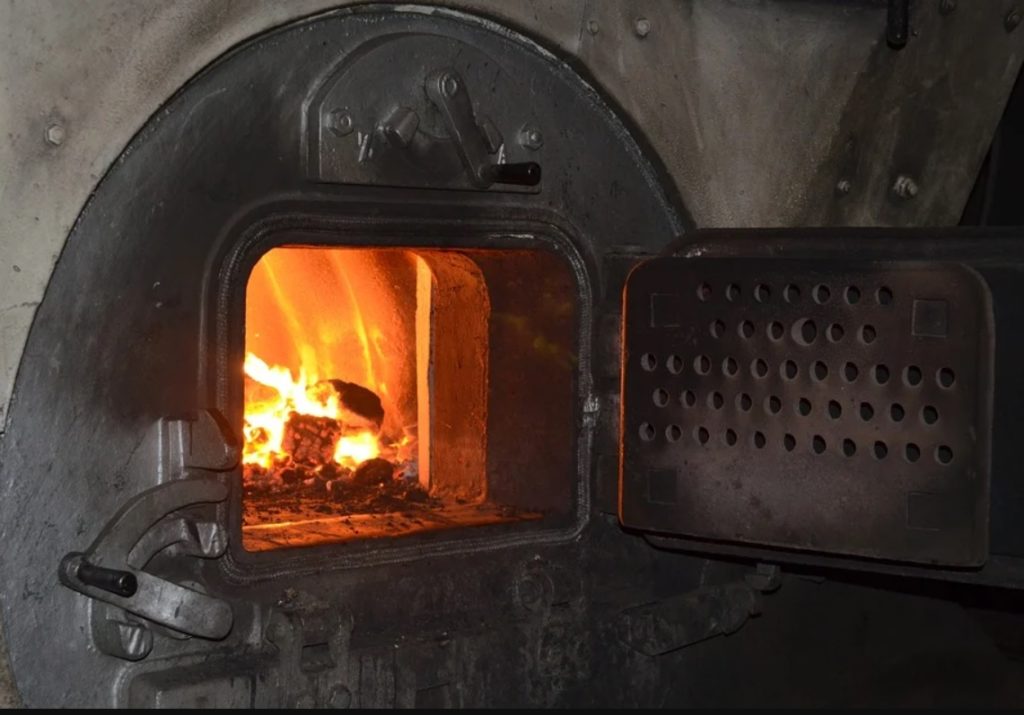
Captain Rudolph tried to steer the ship into the shore to give its passengers a better chance of surviving. However, it got snagged on a rock about 250 meters from the riverbank. The Montreal began to break apart as the inferno raged.
Passengers began hurling themselves into the deep and fast-flowing waters, many of them on fire. Because most of them could not swim, they were doomed to drown in the swirling Saint Lawrence River. Some were even killed when struck by pieces of lumber being thrown overboard in an attempt to give them something to cling to in the river.
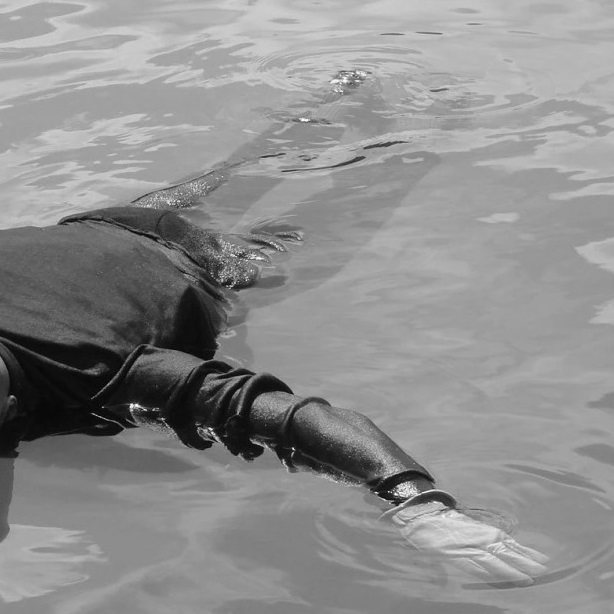
The Napoleon immediately turned around and tried to rescue as many of the passengers as possible by throwing out ropes and lowering its lifeboat.
One woman from Edinburgh named Margaret Bloomfield managed to catch hold of and cling to piece of rope with one hand. During the fire, she had lost two of her children, aged eleven and five. However, she also saved the two others, aged one and nine.
She held one of her daughters above water with the other hand and used her teeth to hold on to the clothing of her last child. According to the Montreal Gazette: “So heavy was the load that two of her teeth gave way and were lost, yet she still retained her hold.”

In total, over 250 people drowned and approximately 50 others were rescued by the Napoleon.
Meanwhile, Captain Rudolph managed to swim to another steamer, the Alliance, which rescued him. The Alliance also collected dozens of bloated corpses floating in the Saint Lawrence River near Cap-Rouge, including men, women and children.
While Mount Hermon Cemetery near Quebec City received most of the bodies for burial, Mount Royal Cemetery in Montreal also donated a plot to inter several victims of the Montreal.
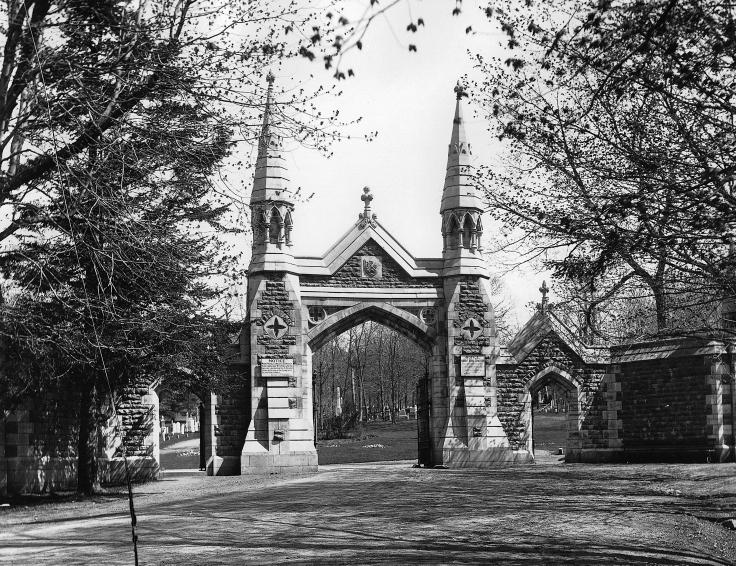
The Montreal’s owner, John Wilson, faced a lot of scrutiny following the tragedy. Earlier in the season, the insurers of the steamer condemned it and refused to supply future insurance. With a long history of boiler fires, the insurers simply deemed the derelict steam-ship as unseaworthy.
However, John Wilson still kept it running on daily trips between Quebec City and Montreal.
Prosecutors put the reckless Captain Rudolph on trial, but the judge ultimately acquitted him.

Within a year, he was back on the river despite having killed so many people with his foolish decision to try to overtake the Napoleon in his derelict vessel, the Montreal.
Most of the Scottish emigrants who survived would eventually return home to Scotland as very broken people whose dreams had been dashed. Families were ruined and survivors were devastated.
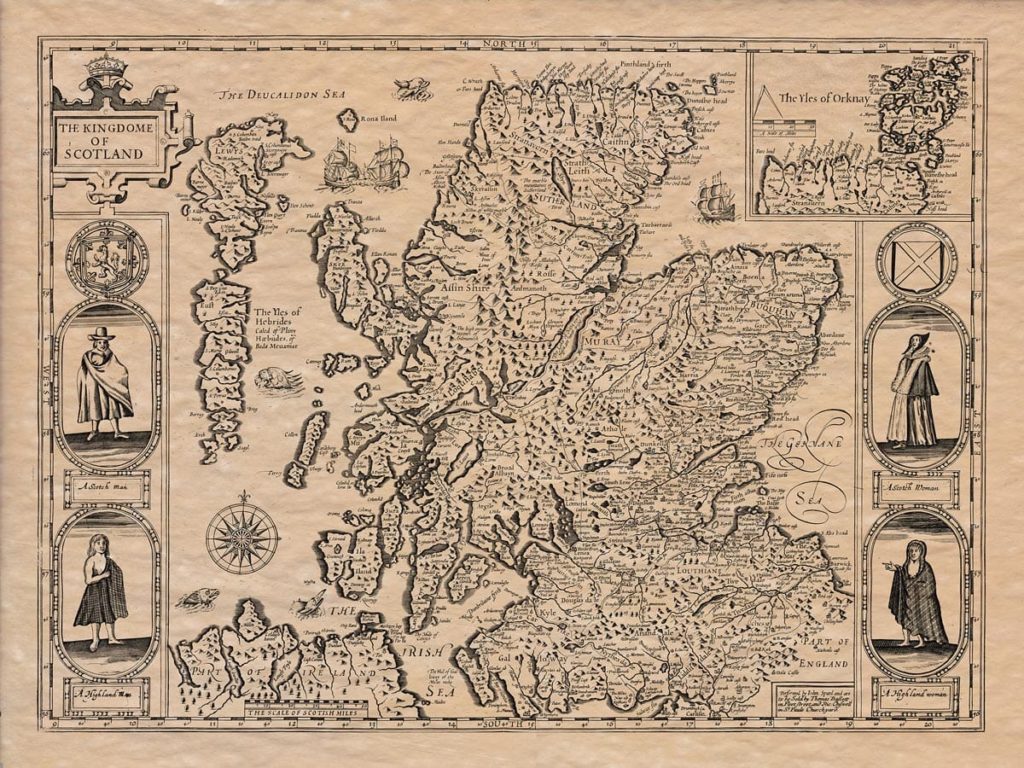
Are the wet and paranormal footprints found so often on Clock Tower Quay related to this maritime disaster and tragedy? It is certainly worth more investigation!
Company News
With the Halloween Season behind us, Haunted Montreal is moving into winter mode by restarting our Haunted Pub Crawl!
Offered every Sunday at 3 pm in English and the last Sunday of the month at 4 pm in French, the Haunted Pub Crawl is a great way to enjoy some spirits with a spirit!

Starting at McKibbin’s Pub on Bishop Street, guests will hear some of Montreal’s most infamous ghost stories while enjoying drinks in three haunted pubs!
Designed for the winter, the pubs are each within a 5-minute walking distance to ensure clients stay warm!
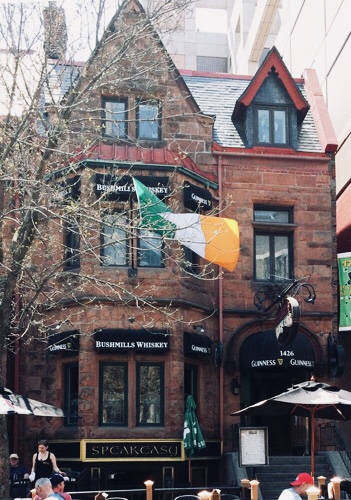
We are also offering our other ghost walks and paranormal investigation as private tours, weather permitting:
The Haunted Downtown Ghost Walk
The Haunted Mountain Ghost Walk
The Haunted Griffintown Ghost Walk
Paranormal Investigation in the Old Sainte Antoine Cemetery
For private tours, clients can request any date, time, language and operating tour. These tours are based on the availability of our actors and start at $170 for small groups of up to 7 people.
Email info@hauntedmontreal.com to book a private tour!
We are also offering our Virtual Ghost Tour on demand in both English and French.

Please spread the word to those who might be interested in a Haunted Montreal experience and if you want to send someone a haunted experience as a gift for the holidays, now you can. Introducing Haunted Montreal Gift Certificates available through our website and redeemable via Eventbrite for any of our in-person or virtual events (no expiration date).
Finally, we have opened an online store for those interested in Haunted Montreal merchandise. We are selling t-shirts, magnets, sweatshirts (for those haunted fall and winter nights) and mugs with both the Haunted Montreal logo and our tour imagery.
Purchases can be ordered through our online store: shop.hauntedmontreal.com
Haunted Montreal would like to thank all of our clients who attended a ghost walk, haunted pub crawl, paranormal investigation or virtual event during the 2020 – 2021 season!
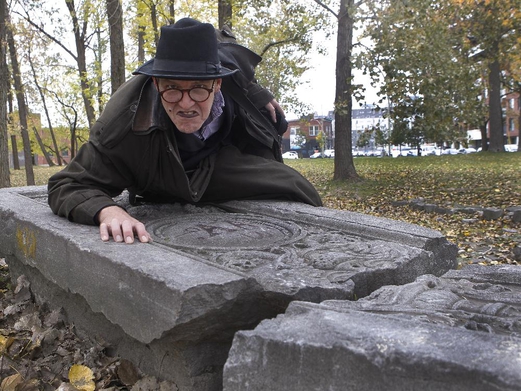
If you enjoyed the experience, we encourage you to write a review on our Tripadvisor page, something that helps Haunted Montreal to market its tours.
Lastly, if you would like to receive the Haunted Montreal Blog on the 13th of every month, please sign up to our mailing list.
Coming up on December 13: Montreal’s Secret Pool
Perched on the slopes of the mountain lies a mysterious and abandoned swimming pool. Authorities at the Old Royal Victoria Hospital built it in 1961, allegedly to allow nurses to swim there. Since its construction, rumours have swirled that it was actually built to conceal children buried on the site. These allegedly include Indigenous victims of the nearby Allan Memorial Institute – McGill’s deranged Psychiatry Department. Known as “Montreal’s Secret Pool”, it was closed down following the drowning of a man in 2013. Today, the pool is creepy, decrepit – and some say haunted!
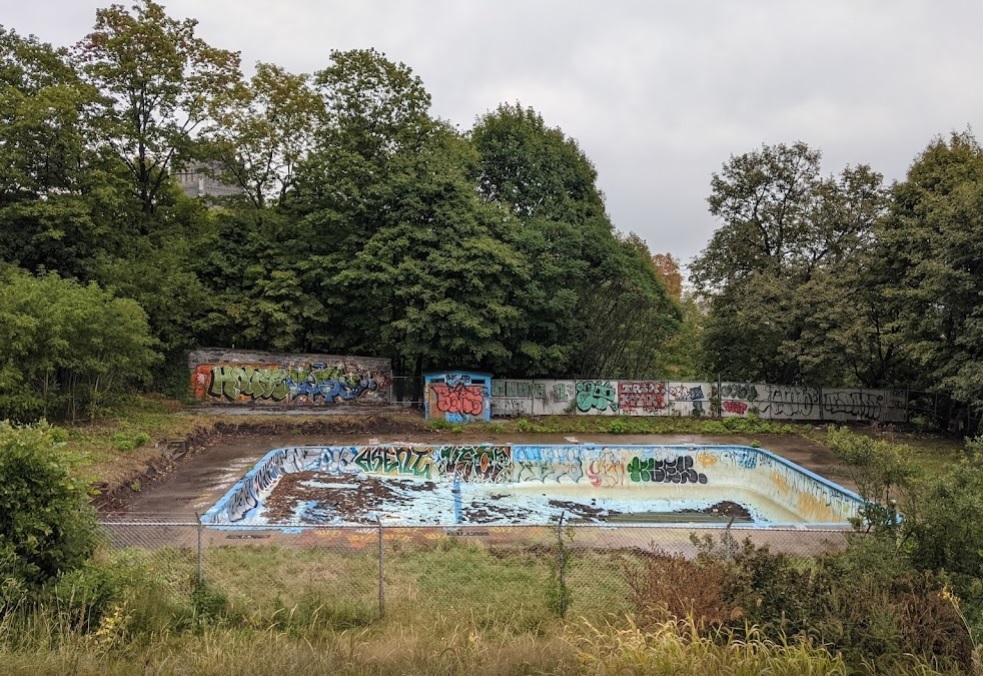
Donovan King is a postcolonial historian, teacher, tour guide and professional actor. As the founder of Haunted Montreal, he combines his skills to create the best possible Montreal ghost stories, in both writing and theatrical performance. King holds a DEC (Professional Theatre Acting, John Abbott College), BFA (Drama-in-Education, Concordia), B.Ed (History and English Teaching, McGill), MFA (Theatre Studies, University of Calgary) and ACS (Montreal Tourist Guide, Institut de tourisme et d’hôtellerie du Québec). He is also a certified Montreal Destination Specialist.


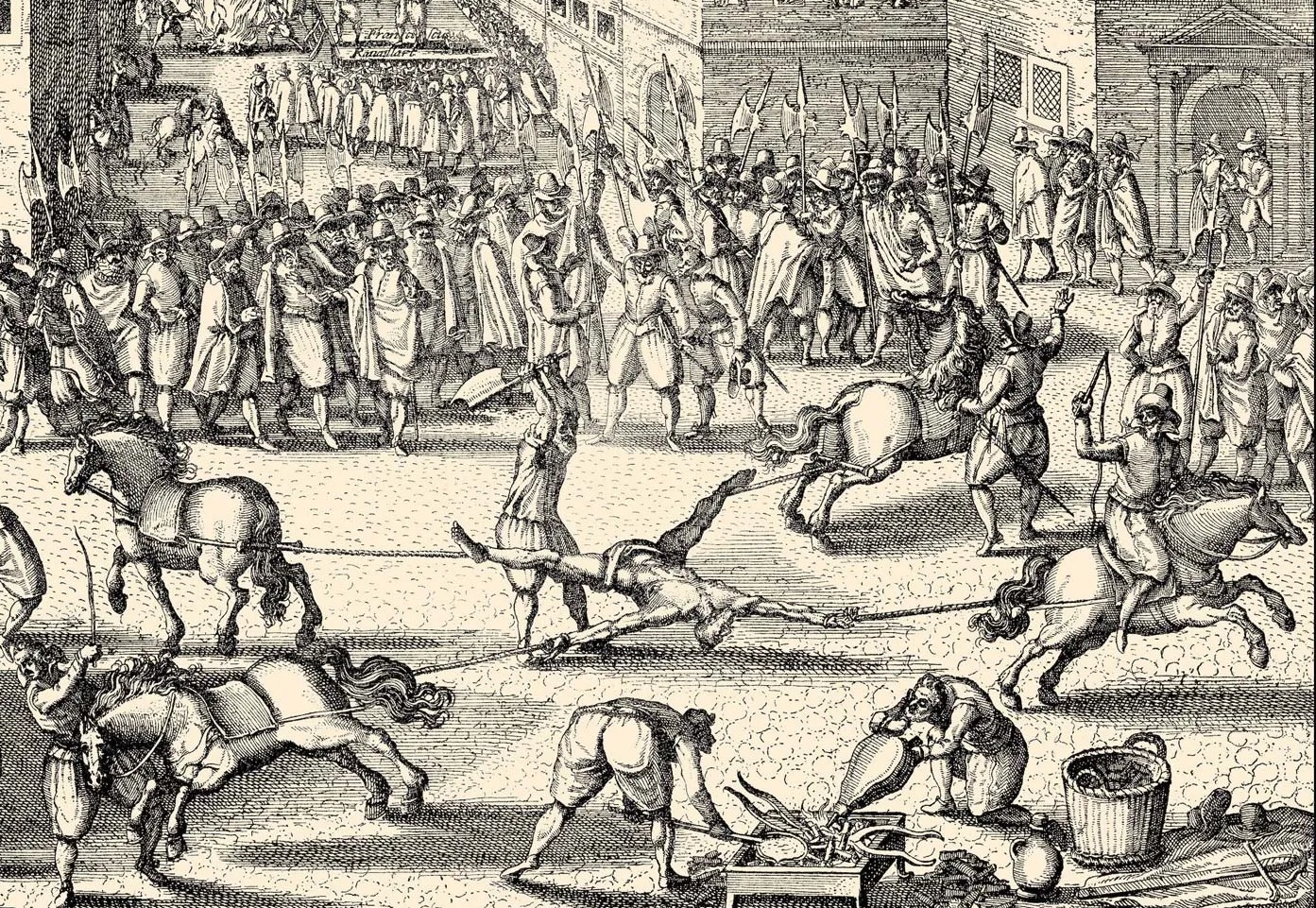
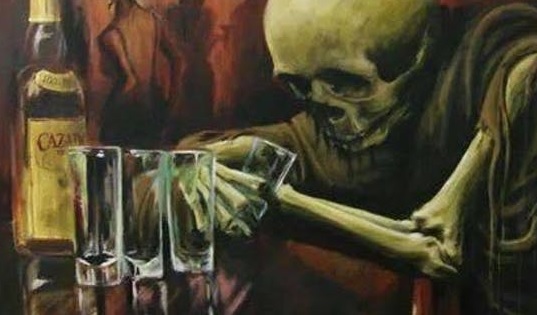
Comments (0)